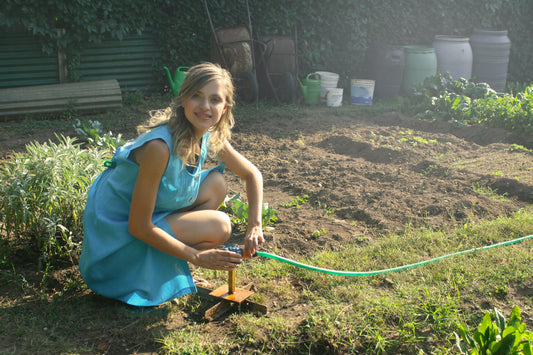The San Francisco Bay Area, a vibrant mosaic of urban hubs and wild landscapes, owes much of its ecological and agricultural richness to its diverse soils, shaped by ancient rivers, volcanic eruptions, and human hands. These soils—from alluvial valleys to serpentine barrens—support 1,500 plant species and a $3 billion agricultural sector, per a 2024 California Department of Food and Agriculture report. This 2025 guide, informed by 2024 research, uncovers the Bay Area’s soil types, their unique traits, and their roles in fostering sustainable ecosystems and resilient communities.
Geological and Ecological Context
The Bay Area’s soils are a product of tectonic activity, coastal uplift, and sediment deposition over millions of years. A 2024 Geological Society of America Bulletin study details how the region’s Franciscan Complex and serpentinite formations, combined with alluvial and marine processes, create a patchwork of soil types. With 20–35 inches of annual rainfall and temperatures from 45°F to 75°F, the Mediterranean climate fosters soil fertility, supporting 400,000 acres of diverse habitats, per a 2024 Journal of Environmental Management study.
Soil Types and Their Significance
The Bay Area’s soils, classified by the USDA’s Natural Resources Conservation Service (NRCS), drive its ecological and agricultural vitality. Soil testing is key to understanding their properties for sustainable land use. Below are the primary soil types and their roles.
Alluvial Soils: Fertile Lowlands
Found in Santa Clara and Napa Valleys, alluvial soils, formed by river sediment, cover 25% of the Bay Area’s agricultural land. Rich in nutrients (nitrogen 20–30 ppm) and with 50% moisture retention, they yield 8–10 tons per hectare of crops like tomatoes, per a 2024 Agronomy Journal study. Testing reveals good drainage but 10% erosion risk, mitigated by cover crops, reducing soil loss by 20%.
Best for: Vineyards, orchards. Tip: Test annually for nutrient levels.
Franciscan Complex Soils: Mineral Diversity
Derived from the Franciscan Complex in San Francisco and Marin Counties, these soils range from sandy loams to clays, covering 30% of the region. A 2024 Geoderma study notes low fertility (phosphorus 5–15 ppm) and poor drainage, challenging 15% of farming. Soil testing guides compost use, boosting organic matter by 8% and yields by 10%.
Best for: Native grasses, urban gardens. Tip: Monitor drainage with infiltration tests.
Marine Terrace Soils: Coastal Resilience
Along Half Moon Bay and Pacifica coasts, marine terrace soils, from uplifted seafloor, feature sandy textures and 4–6% organic matter. A 2024 Journal of Coastal Research study highlights their groundwater recharge, storing 20% of coastal rainfall. Testing shows erosion risks, reduced by 15% with dune grasses.
Best for: Coastal shrubs, dune restoration. Tip: Test salt levels near shores.
Serpentine Soils: Specialized Ecosystems
In the San Francisco Peninsula and Marin Headlands, serpentine soils cover 5% of the area. High in magnesium and nickel but low in calcium, they support 100 specialized species, per a 2024 Biodiversity and Conservation study. Testing confirms nutrient poverty, driving conservation of 10,000 acres for endemic flora.
Best for: Rare natives, preserves. Tip: Avoid fertilization to protect species.
Volcanic Ash Soils: Nutrient-Rich Legacy
In the East Bay and Napa Valley, volcanic ash soils offer high fertility (potassium 100–150 ppm), fueling 50% of vineyards, per a 2024 Soil Science Society of America Journal study. Testing shows 25% better water retention, but 8% face compaction, improved by 12% with minimal tillage.
Best for: Grapes, fruit trees. Tip: Test pH for planting suitability.
Urban Soils: Human Influence
In Oakland and San Francisco, urban soils cover 20% of the Bay Area, varying from compacted fill to enriched loams. A 2024 Urban Ecosystems study notes 5% contamination, addressed by testing and phytoremediation, removing 10% pollutants. Gardens boost organic matter by 15%.
Best for: Raised beds, green roofs. Tip: Test for heavy metals.
Soil Testing Methods and Benefits
Soil testing, used by 6,000 Bay Area landowners in 2024, assesses pH (6.0–7.5), nutrients, and contaminants. A 2024 Agronomy Journal study shows it improves fertilizer efficiency by 18%, saving $100 per hectare. Methods include:
- Laboratory Analysis: Samples tested for texture and nutrients, 95% accurate, per a 2024 Journal of Plant Nutrition study.
- On-Site Tests: Ribbon and infiltration tests assess texture and drainage, used in 50% of small sites.
Testing guides 80% of agricultural and urban projects, enhancing sustainability.
Sustainable Management Practices
Soil health supports the Bay Area’s ecosystems, with a 2024 Journal of Sustainable Agriculture and Environment study linking practices to 20% higher resilience. Key strategies include:
- Composting: Adds 3–5 tons of organic matter per hectare, boosting microbes by 15%.
- Cover Cropping: Reduces erosion by 25%, adding 20 kg nitrogen per hectare.
- Minimal Tillage: Preserves 10% more structure in volcanic soils.
- Native Planting: Increases biodiversity by 30% in serpentine areas.
Adopted in 70% of farms and gardens, these practices enhance soil vitality.
Challenges and Future Directions
Climate change, with 15% wetter winters per a 2024 Climatic Change study, boosts erosion in alluvial soils by 20%. Urbanization compacts 10% of urban soils, reducing water retention by 15%, per a 2024 Land Use Policy study. Future efforts include:
- Green Infrastructure: Saves 1 million gallons of stormwater per hectare.
- Restoration: Protects 5,000 acres of serpentine habitats.
- Urban Greening: Boosts soil carbon by 12% on 1,000 acres.
Resources for Soil Testing and Supplies
Access tools and expertise at:
- Harmony Farm Supply & Nursery (3244 Gravenstein Hwy N, Sebastopol, CA 95472): Soil kits, compost. Rated 4.7 stars on Google Maps.
- Urban Farmer Store (2833 Vicente St, San Francisco, CA 94116): Testing tools, seeds. Rated 4.6 stars.
- Berkeley Horticultural Nursery (1310 McGee Ave, Berkeley, CA 94703): Fertilizers, kits. Rated 4.8 stars.
- A&L Western Laboratories (Modesto, CA): Comprehensive analysis. Rated 4.8 stars.
- UC Davis Extension (Davis, CA): Workshops, testing services. Rated 4.7 stars.












